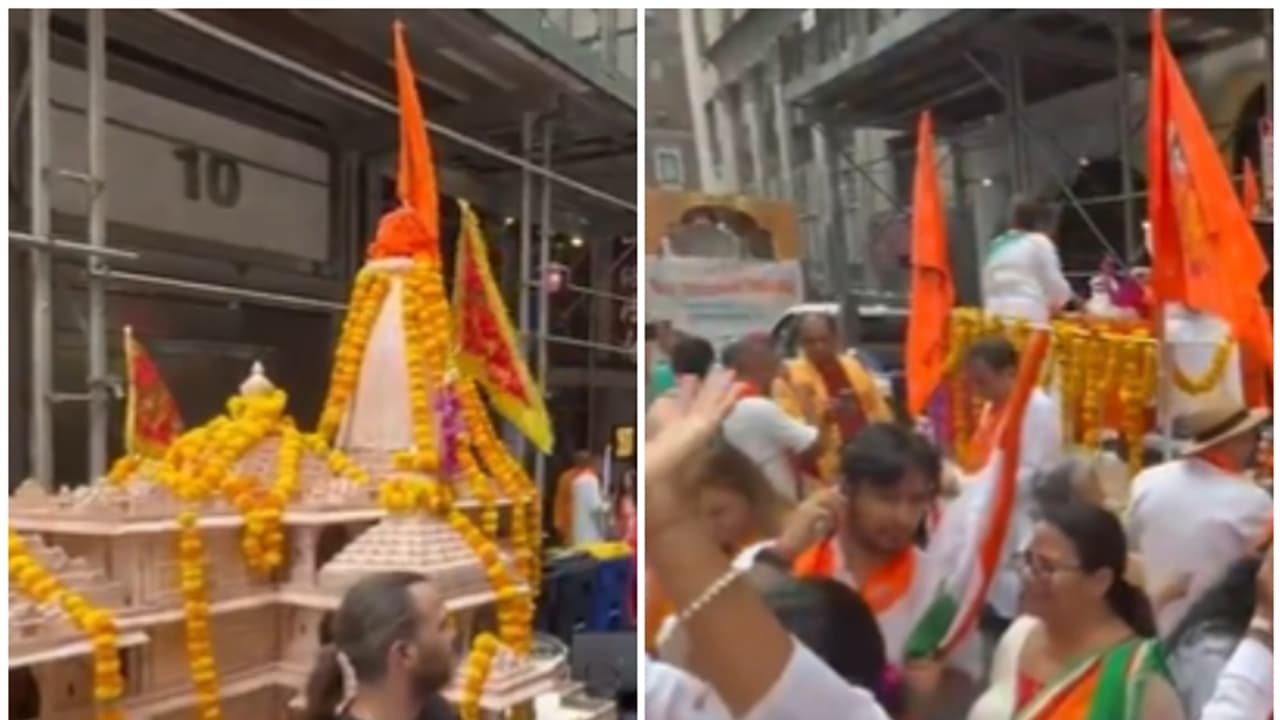The India Day Parade in NYC showcased a Ram Mandir float amid controversy, highlighting its cultural significance despite objections from various groups.
Despite some US-based organizations expressing objections, a carnival float showcasing Ayodhya's Ram Mandir was prominently featured in the India Day Parade in New York City on Sunday. This float, highlighting the temple of Lord Ram, which was consecrated earlier this year in Ayodhya, was adorned with vibrant garlands. Participants from the Indian diaspora, dressed in traditional attire and waving the Indian tricolor, danced joyfully as the float moved through the streets of New York City.
Controversy Surrounds Float’s Participation
Just before the parade, debate erupted over the Ram Mandir float's admission. Numerous organizations claimed that the float should be removed because it was anti-Muslim. Concerns were expressed by organizations such as Hindus for Human Rights, the Council on American Islamic Relations, and the Indian American Muslim Council in a letter to New York City Mayor Eric Adams and Governor Kathy Hochul. They asserted that, in violation of India's secular ideals, the float represented the exaltation of the mosque's destruction and confused Hindu nationalist ideology with Indian identity.
Organizers Defend the Float’s Presence
In response to the controversy, the Vishwa Hindu Parishad of America, responsible for organizing the float, defended its inclusion. They asserted that the float was intended to represent a significant Hindu place of worship and celebrate an important deity in Indian and Hindu culture. The Hindu American Foundation also supported the float, framing it as an exercise in free speech. The Federation of Indian Associations, which coordinated the parade, emphasized that the event reflects India’s cultural diversity and includes representations from various communities.
The annual New York City parade, held three days after India’s Independence Day, continues to be a platform for celebrating the rich cultural heritage of India.
